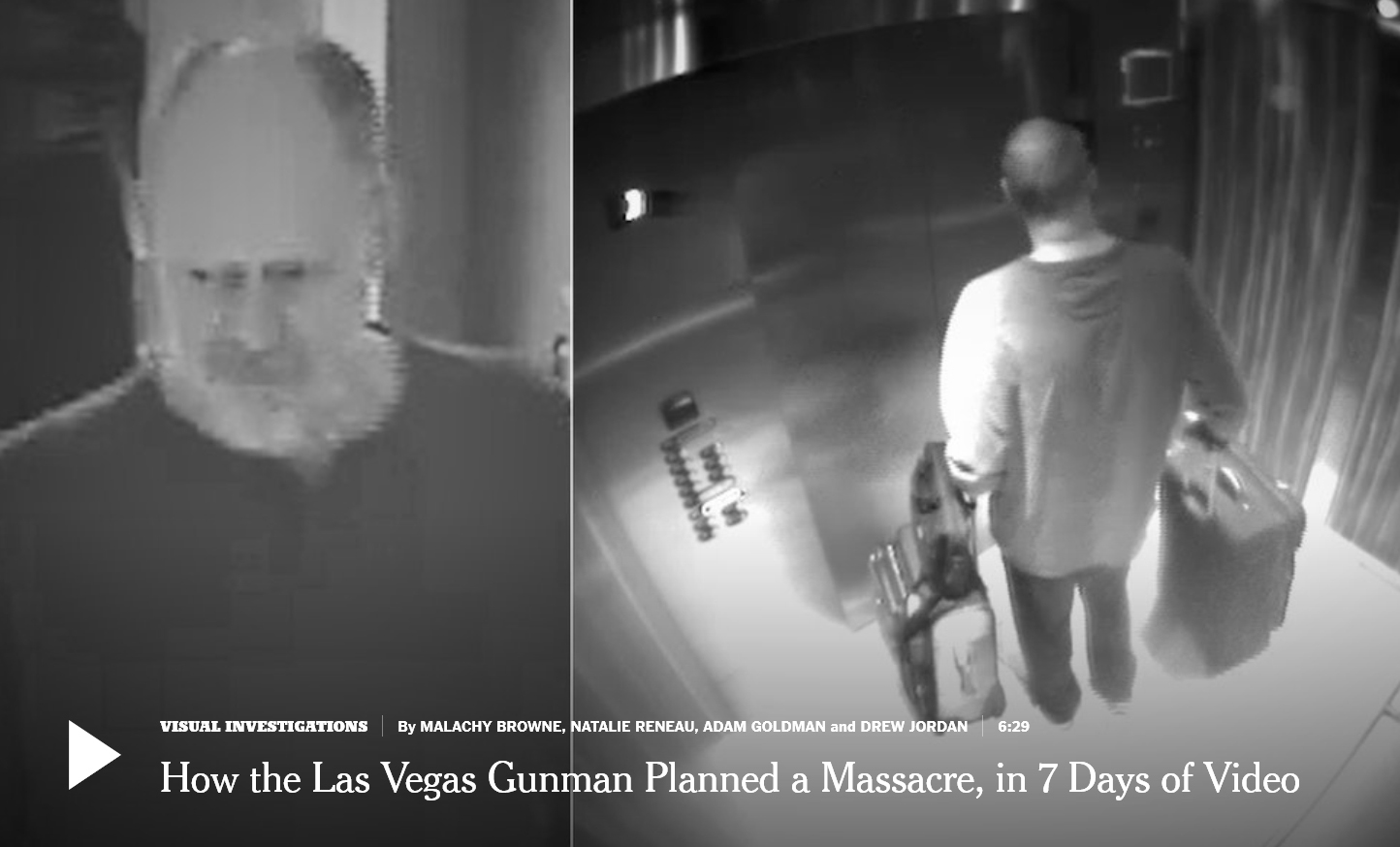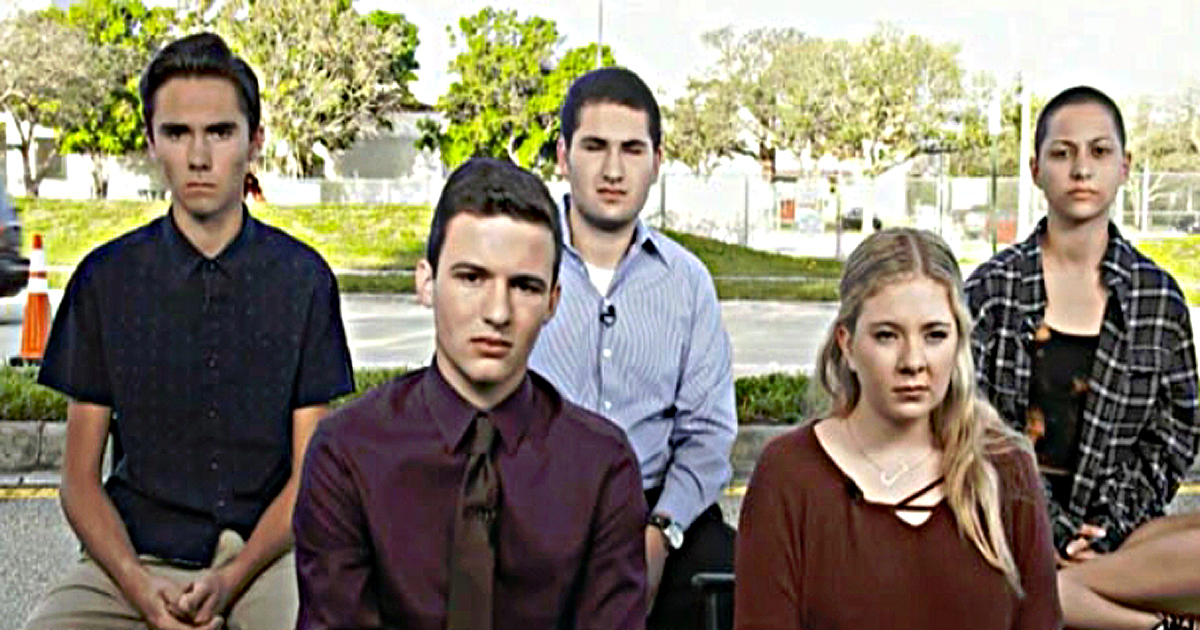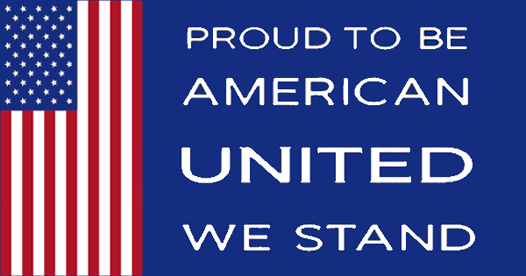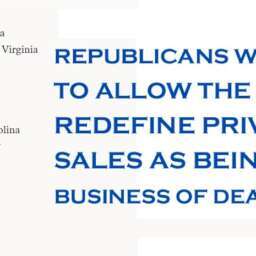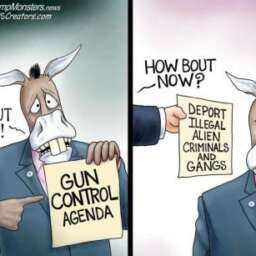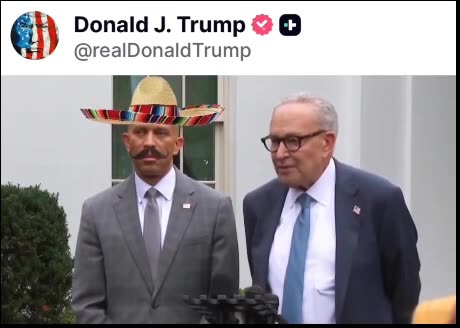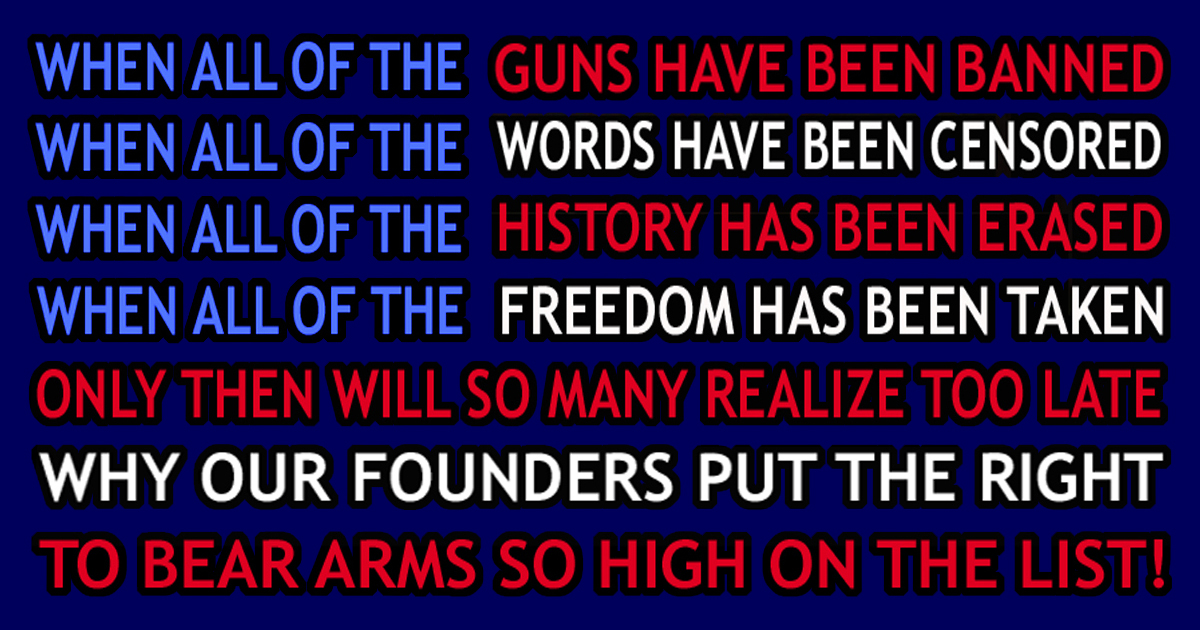He Gambles. He Tips Staff. He Eats Alone. All the While, He’s Stocking His Vegas Suite With Guns. More at NYT. Does this change your opinion on this event?
Outcry from gun advocates after YouTube blocks videos on firearms assembly, sale
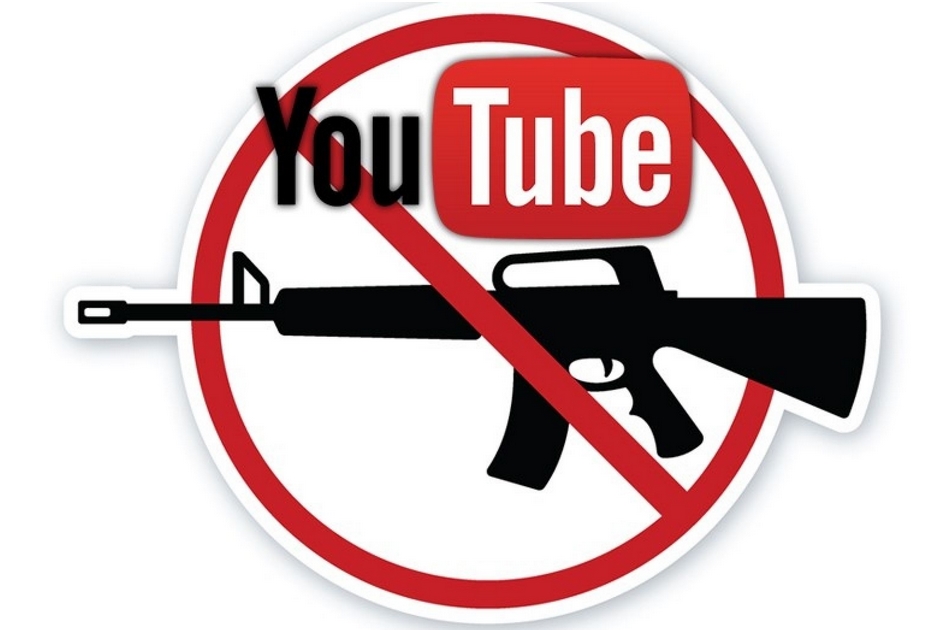 Fox News – Outcry from gun advocates after YouTube blocks videos on firearms assembly, sale
Fox News – Outcry from gun advocates after YouTube blocks videos on firearms assembly, sale
“YouTube has announced that it now will be implementing restrictions on certain videos that feature firearms and accessories, sparking backlash from Second Amendment advocates.
YouTube recently updated the company’s “policies on content featuring firearms” to prohibit “any video intending to “sell firearms or certain firearm accessories,” either directly or through links to sites that do.
According to the website, the prohibited accessories include “but may not be limited to” bump stocks, Gatling triggers, drop-in auto sears, conversion kits or any equipment that might “enable a firearm to simulate automatic fire or convert a firearm to automatic fire.”
It also mentioned that content intending to promote the sale of high-capacity magazines no longer will be allowed.
In addition to these types of videos, YouTube also will prohibit any video that “provides instructions on manufacturing” the previously mentioned firearms and accessories. Videos explaining how to install those accessories or gun modifications also will be banned.
Advocates for gun rights have slammed the media giant’s attempt to restrict content.
The National Shooting Sports Foundation, which has more than 200,000 subscribers on its YouTube channel, said the new policy “provides cause for concern.”
In a statement on its website, NSSF said that move is “especially worrisome,” because it has the “potential for blocking educational content that serves an instructional and skill-building purpose.”
The statement went on to say that such restrictions “impinge on the Second Amendment,” and stifle “commercial free speech,” which is protected under the Constitution.
Another popular channel, Spikes Tactical, said in an Instagram post Tuesday that it had its account suspended for “repeated or severe violations” of the community guidelines.
The notice of suspension was posted with the caption, “the Liberal Left will slowly chip away at our freedoms and erode our rights, and the first step is to squelch our voice.”
Spikes Tactical has a following of more than 200,000 on Instagram as well.
A statement from a spokesperson at YouTube said the company “routinely makes updates an adjustments” for all policies, Bloomberg reported.
“While we’ve long prohibited the sale of firearms, we recently notified creators of updates we will be making around content promoting the sale or manufacture of firearms and their accessories.”
The call for more restrictions comes just days before the March For Our Lives rally, which was organized by the survivors of the Parkland massacre where 17 students were killed after an alleged 19-year-old gunman opened fire.”
YouTube Officially To Start Banning Firearms Related Content
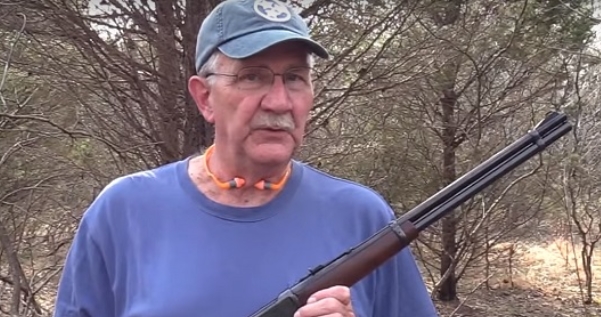 Funker530 – YouTube Officially To Start Banning Firearms Related Content.
Funker530 – YouTube Officially To Start Banning Firearms Related Content.
“In a sweeping decision, YouTube has released their latest dictatorial policy on firearms content, and the outlook is not good for the firearms community. These new loosely stated rules and guidelines give YouTube the power to not only remove firearms content from their platform at will, but also give them the ability to conduct outright bans, and censor prominent voices in the pro second amendment community without any chance of an appeal. Here’s what it looks like.
It is no secret or surprise that YouTube, a property of Alphabet Inc., has long been an anti-gun entity on the internet. In the past, the platform has had many problems where firearms videos and creators alike were wantonly removed without rhyme or reason. Inquiries into these removals almost always resulted in the platform being forced to allow the creators back onto YouTube as the content was not directly in violation of any rules or guidelines set into motion by the company. As of yesterday, March 19, 2018, all of that has changed because they have released their official stance on firearms with new rules and guidelines for firearms related content.
YouTube no longer allows videos that: Intend to sell firearms or certain firearms accessories through direct sales (e.g., private sales by individuals) or links to sites that sell these items. These accessories include but may not be limited to accessories that enable a firearm to simulate automatic fire or convert a firearm to automatic fire (e.g., bump stocks, gatling triggers, drop-in auto sears, conversion kits), and high capacity magazines (i.e., magazines or belts carrying more than 30 rounds). Provides instructions on manufacturing a firearm, ammunition, high capacity magazine, homemade silencers/suppressors, or certain firearms accessories such as those listed above. This also includes instructions on how to convert a firearm to automatic or simulated automatic firing capabilities or shows users how to install the above-mentioned accessories or modifications. You can read the official release from YouTube at this link.
At first, these rules and guidelines may seem reasonable to the average person who views them. When you dig a little deeper into the firearms YouTube community however, you see an entirely different picture. No longer are firearms content creators allowed to post videos where they are sponsored by members of the gun industry. Also, there is no retroactive protection for channels that have violated these rules before they existed. That means, any video that was ever sponsored by any ammunition company, or webpage that sells firearms or firearm accessories is now an offense the creator can be banned for. This means many creators like Hickok45, who have audibly mentioned their sponsors in every video, will have to remove substantial portions of their video library, just because they have directly mentioned these sponsors. Mention of those sponsors could be considered a violation of the guidelines, and result in a channel strike, even if the video was created in 2011. Three strikes and the creator loses access to the channel they have been working to create.
Many creators in the firearms space also have several other videos that could result in retroactive bans from videos that were created long before these guidelines were in place. For example, popular YouTubers such as Demolition Ranch and IraqVeteran8888 feature a few videos where they are operating legally owned and purchased automatic weapons, weapons that are suppressed, or show users how to bump fire. These videos could result in channel strikes against the creators, which would then result in their ban from the platform with little to no warning for the creator. These rules were definitely made with malicious intent against the firearms community of YouTube, as the first guideline alone is grounds enough for the removal of a majority of the well made firearms content on the platform.
The video you are about to watch is in violation of the new YouTube guidelines for firearms related content. We highly suggest that you seek out your favorite content creators in the firearms space on every available social media platform, that way you can continue to follow them if they are silenced by YouTube.”
The Scandal Behind The Florida School Shooting Is About Federal Coercion, Not Guns
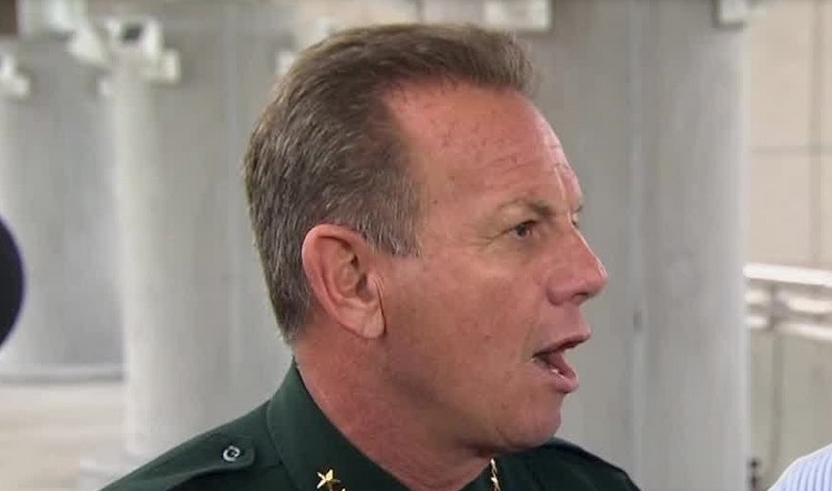 The Federalist – The Scandal Behind The Florida School Shooting Is About Federal Coercion, Not Guns
The Federalist – The Scandal Behind The Florida School Shooting Is About Federal Coercion, Not Guns
The Broward County Sheriff’s Office failed to respond to warnings about the Parkland shooter ahead of time, and not because of a mistake or an oversight. It was the official policy.
A thousand different things might have prevented the Parkland shooter from killing 17 people at a Florida high school last month. But among the most likely measures would have been the intervention of local law enforcement after any one of dozens of complaints about him from neighbors, family friends, and classmates.
Why didn’t it happen? The shocking truth is that local officials failed to intervene not because of an oversight or a mistake, but because of a deliberate policy put in place to secure federal funding.
Last week, Paul Sperry of RealClearInvestigations reported that Broward County School District, the country’s sixth largest, “was in the vanguard of a strategy, adopted by more than 50 other major school districts nationwide, allowing thousands of troubled, often violent, students to commit crimes without legal consequence.”
The goal of the policy was to reduce the “school-to-prison pipeline” by making it more difficult for school officials to suspend or expel problem students, and to make it harder for local police to arrest them for certain crimes—some of which the 19-year-old shooter allegedly committed before his February 14 rampage at Marjory Stoneman Douglas High School. According to Sperry, the strategy came straight out of Washington:
The new policy resulted from an Obama administration effort begun in 2011 to keep students in school and improve racial outcomes (timeline here), and came against a backdrop of other efforts to rein in perceived excesses in ‘zero tolerance’ discipline policies, including in Florida.
Broward school Superintendent Robert W. Runcie—a Chicagoan and Harvard graduate with close ties to President Obama and his Education Department—signed an agreement with the county sheriff and other local jurisdictions to trade cops for counseling. Students charged with various misdemeanors, including assault, would now be disciplined through participation in ‘healing circles,’ obstacle courses and other ‘self-esteem building’ exercises.
Why would Broward County and other major school districts adopt such a policy? Because the federal government was paying them for it. “Applications for federal grants reveal that Runcie’s plan factored into approval of tens of millions of dollars in federal funding from [Education Secretary Arne] Duncan’s department,” writes Sperry.
The Failure to Intervene Wasn’t a Mistake
In the weeks following the shooting, Broward County Sherriff Scott Israel was roundly criticized, not just for failing to respond to advance warnings about the shooter but also for using his elected office to run a corrupt patronage program. He was also criticized for the cowardly conduct of four of his deputies, including the school guard, who hid behind their cars outside the school during the crucial minutes of the massacre when they might have stopped it. Israel responded to all this shamefully, blaming the National Rifle Association, the school guard—everyone but himself.
Given the failures of Israel’s office, it appeared as though the system itself had failed, just as it failed in the Sutherland Springs church shooting in Texas last year. In that case, the 26-year-old killer should have been barred from purchasing the semiautomatic rifle he used to kill 26 people and injure 20 more because of a domestic violence conviction while serving in the Air Force. The conviction should have been reported to the FBI’s National Crime Information Center database, which would have flagged his prohibited purchase.
Likewise, if warnings about the Parkland shooter had been taken seriously, he probably would not have been able to buy the semiautomatic rifle he used in the February 14 shooting.
But now we know that the two cases are very different. Sutherland Springs was a breakdown in a system that otherwise would have worked. But in Broward County, officials failed to intervene not because of a mistake or an oversight, but because of a deliberate federal policy put into place and actively promoted by local officials. Law enforcement failed to respond to dozens of complaints and warnings about the young man because not responding to such complaints was the official policy.
Federal Coercion Corrupts Public Institutions
In policy wonk circles, Broward County’s deal with Obama’s Education Department is called “cooperative federalism.” The idea is that state and local governments “cooperate” with federal executive branch agencies in exchange for generous funding—funding they would otherwise have to raise by taxing local residents.
This is how massive programs like Medicaid operate. For every dollar that states spend, the feds match a percentage of that dollar on the condition that the state’s Medicaid program adheres to a long list of federal rules and regulations. In practice, it’s not cooperation but coercion. For large states like Texas and Florida, the federal government dumps tens of billions of dollars into their Medicaid programs every year. Because of how large Medicaid is relative to most states’ budgets, there’s no way they could reject the federal funding—and the rules that come with it—without a breakdown of state services. The result is that federal bureaucrats dictate how states run their Medicaid programs.
Such a scheme helps, of course, if local officials agree with federal policy. By all accounts, Runcie, the Broward County school superintendent, was a willing partner with the Obama administration. He turned his school district into a poster child for the Obama administration’s “cops for counseling” policy while also securing substantial federal grants. All he had to do was make sure Israel and other local law enforcement authorities looked the other way when complaints came in about kids like the shooter. The school district’s arrest and expulsion numbers went down, and Runcie was able to claim success.
Intermingling finances is how the federal government coerces state and local governments into doing things they don’t want to do. After all, state and local officials aren’t always as compliant as Runcie. Sperry notes that Obama’s secretary of education, Arne Duncan, issued new discipline guidelines in January 2014, “strongly recommending that the nation’s schools use law enforcement measures and out-of-school suspensions as a last resort.” Duncan was joined by Attorney General Eric Holder in the announcement. The new guidelines were more than mere suggestions, “they also came with threats of federal investigations and defunding for districts that refused to fully comply.”
This isn’t something to shrug off. When public policy is formulated by federal bureaucrats in Washington DC and imposed on local communities through offers of federal funding, it removes political accountability. Local officials who are carrying out the will of distant federal bureaucrats can hardly be blamed for the outcomes of policies they didn’t devise.
This loss of accountability is a form of corruption. Not the straightforward quid-pro-quo kind of corruption, but the kind that erodes and undermines public institutions over time. If all a mayor, school superintendent, or county sheriff has to do to keep raking in federal grants is tick off a list of boxes, then ticking off those boxes becomes how you define success. That’s precisely what happened in Broward County, with tragic consequences.”
6 Reasons Gun Control Will Not Solve Mass Killings
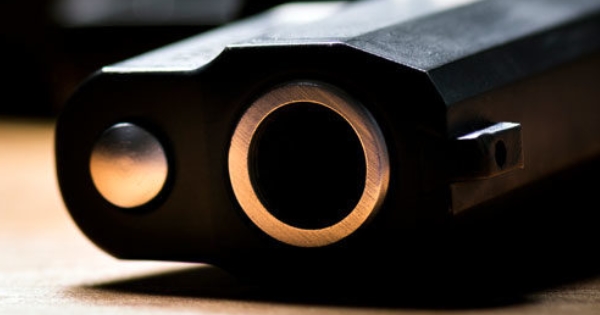 Daily Signal – 6 Reasons Gun Control Will Not Solve Mass Killings
Daily Signal – 6 Reasons Gun Control Will Not Solve Mass Killings
“In the wake of the tragic murder of 17 innocent students and teachers at Marjory Stoneman Douglas High School in Parkland, Florida, students, educators, politicians, and activists are searching for solutions to prevent future school shootings.
As emotions morph from grief to anger to resolve, it is vitally important to supply facts so that policymakers and professionals can fashion solutions based on objective data rather than well-intended but misguided emotional fixes.
Are there ways to reduce gun violence and school shootings? Yes, but only after objectively assessing the facts and working collaboratively to fashion common-sense solutions.
Definitions
Americans need an alternative to the mainstream media. But this can’t be done alone. Find out more >>
“Mass shooting” typically refers to mass killings perpetrated by a firearm or firearms. In 2013, Congress defined “mass killing” as “3 or more killings in a single incident.”
A prominent 2017 study defined “mass public shootings” as incidents that occur in the absence of other criminal activity (such as robberies, drug deals, and gang-related turf wars) in which a gun is used to kill four or more victims at a public location.
1. Mass killings are rare, and mass public shootings are even rarer.
Mass killings are very rare, accounting for only 0.2 percent of homicides every year and approximately 1 percent of homicide victims.
Only 12 percent of mass killings are mass public shootings. Most mass killings are familicides (murders of family members or intimate partners) and felony-related killings (such as robberies gone awry or gang-related “turf battles”).
Although there has been a slight increase in the frequency of mass public shootings over the past few years, the rates are still similar to what the United States experienced in the 1980s and early 1990s.
2. Many gun control measures are not likely to be helpful.
Over 90 percent of public mass shootings take place in “gun-free zones” where civilians are not permitted to carry firearms.
A complete ban on “assault weapons” will save very few lives: Six out of every 10 mass public shootings are carried out by handguns alone, while only one in 10 is committed with a rifle alone.
The average age of mass public shooters is 34, which means that increasing the minimum age for purchasing firearms would not target the main perpetrators of mass public shootings.
Few mass public shooters have used “high-capacity magazines,” and there is no evidence that the lethality of their attacks would have been affected by delays of two to four seconds to switch magazines. In fact, some of the largest mass shootings in U.S. history were carried out with “low-capacity” weapons:
The Virginia Tech shooter killed 32 and injured 17 with two handguns, one of which had a 10-round magazine and the other a 15-round magazine. He simply brought 19 extra magazines.
Twenty-three people were killed and another 20 injured in a Killeen, Texas, cafeteria by a man with two 9mm handguns, capable of maximums of 15-round and 17-round magazines, respectively.
A mentally disturbed man armed with two handguns and a shotgun shot and killed 21 people in a San Ysidro McDonald’s and injured another 19. The handguns utilized 13-round and 20-round magazines, and the shotgun had a five-round capacity.
3. Public mass shooters typically have histories of mental health issues.
According to one study, 60 percent of mass public shooters had been diagnosed with a mental disorder or had demonstrated signs of serious mental illness prior to the attack.
A large body of research shows a statistical link between mass public killings and serious untreated psychiatric illness. The most commonly diagnosed illnesses among mass public shooters are paranoid schizophrenia and severe depression.
It is important to remember that the vast majority of people with mental disorders do not engage in violent behaviors, and there is no empirical means of effectively identifying potential mass murderers.
4. The United States does not have an extraordinary problem with mass public shootings compared to other developed countries.
After adjusting for population differences, many other developed countries have worse problems with mass public shootings than the United States has.
There were 27 percent more casualties per capita from mass public shootings in the European Union than in the U.S. from 2009 to 2015.
5. Mass killers often find ways to kill even without firearms.
Some of the worst mass killings in the United States have occurred without firearms:
Before the 2016 Orlando nightclub shooting, the deadliest attack on the LGBT community in America occurred in 1973 when an arsonist killed 32 and injured 15 at the Upstairs Lounge in New Orleans.
In 1987, a disgruntled former airline employee killed 43 people after he hijacked and intentionally crashed a passenger plane.
In 1990, an angry ex-lover burned down the Happy Land social club where his former girlfriend worked, killing 87 others in the process.
In 1995, 168 people were killed and more than 600 were injured by a truck bomb parked outside the Alfred P. Murrah Federal Building in Oklahoma City, Oklahoma.
In 2017, a man in New York City killed eight and injured 11 by renting a truck and plowing down pedestrians on a Manhattan bike path.
In other countries, bombings, mass stabbings, and car attacks frequently kill more people than even the deadliest mass shootings in the United States. Consider the following:
Spain (2004) — Bombing: 192 deaths, 2,050 injuries;
Great Britain (2005) — Bombing: 52 deaths, 784 injuries;
Japan (2008) — Car ramming and stabbing: seven deaths, 10 injuries;
China (2010) — Shovel-loader: 11 deaths, 30 injuries;
China (2014) — Car ramming: six deaths, 13 injuries;
China (2014) — Mass stabbing: 31 deaths, 143 injuries;
Germany (2015) — Plane crash: 150 deaths;
Belgium (2016) — Bombing: 21 deaths, 180 injuries;
France (2016) — Car ramming: 86 deaths, 434 injuries;
Germany (2016) — Car ramming: 11 deaths, 56 injuries;
Japan (2016) — Mass stabbing: 19 deaths, 45 injuries; and
Great Britain (2017) — Bombing: 22 deaths, 250 injuries.
6. Australia did not “eliminate mass public shootings” by banning assault weapons.
Australia did not “eliminate mass public shootings” by banning assault weapons. Mass shootings in the country were rare before the 1996 National Firearms Act, and multiple-casualty shootings still occur.
Before 1996, firearms crimes in Australia rarely involved firearms prohibited under the National Firearms Act, suggesting that any change in firearm-related crimes or deaths was not due to the law.
Further, Australia did not see a reduction in “mass murders.” In the years immediately following enactment of the National Firearms Act, the country experienced six mass murders in which five or more people were killed—they just were not killed with guns.”
Indoctrination: Like the Big Kids, Kindergartens Plan Protests for Gun Control
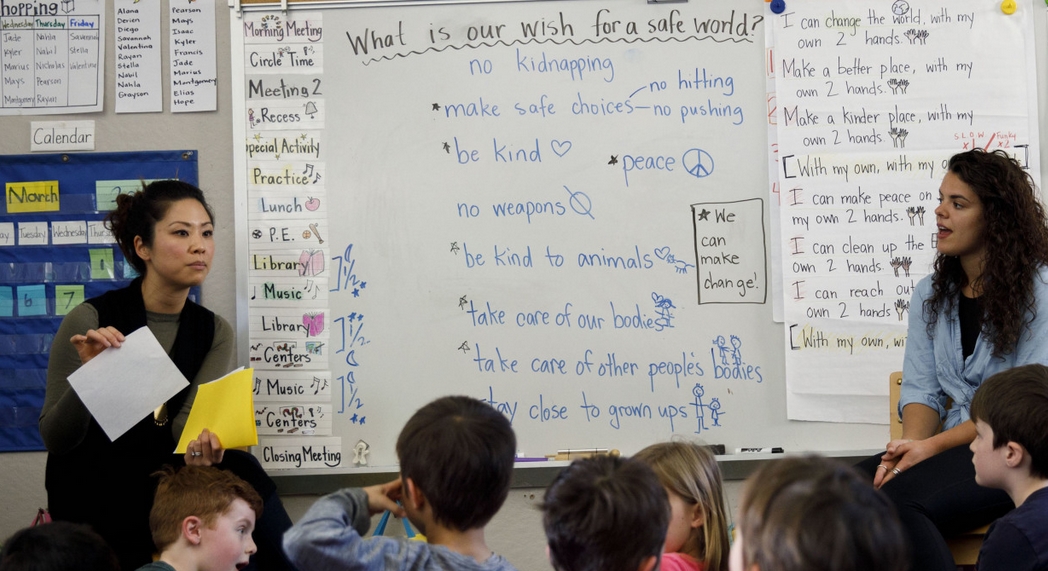 WallStreetJournal – Like the Big Kids, Kindergartens Plan Protests for Gun Control
WallStreetJournal – Like the Big Kids, Kindergartens Plan Protests for Gun Control
“If children in kindergarten can practice active-shooter drills, then they can also walk out to call for safety, some parents and educators say.
Plans to protest on March 14, which began with high-school shooting survivors in Parkland, Fla., are spreading to include elementary schools. Schools are grappling with how to address the event with children as young as 5 years old and with finding ways for children who are too little to be told about school shootings to take part.
The protest calls for students nationwide to walk out of class at 10 a.m. for 17 minutes, one minute in honor of each victim at February’s shooting in Parkland.
Some of the most organized events are at schools with progressive traditions and parent bodies. At Manhattan Country School, a private school with a social justice mission in New York City, children in prekindergarten through fourth grade will sing the peace songs “If I Had a Hammer” and “Paz y Libertad.”
And at PS1 Pluralistic School in Santa Monica, Calif., elementary students wrote their wishes for a safer world on small pieces of rice paper, to be hung from a large piece of driftwood in a schoolwide ceremony. Children said they wished for houses for the homeless, kindness, an end to drought and more wishes. Although teachers didn’t mention anything about firearms, they were on at least one boy’s mind.
“I wish there were no guns so people couldn’t suffer,” said 8-year-old Gabriel Chibane. “It doesn’t make sense. Why shouldn’t they have a longer life instead of just a short life?”
In Utah, leaders of the statewide parent-teacher association are embracing a social-media campaign called #WhatsYour17. It encourages positive actions tied to the number of victims killed in Parkland.
“We’ve talked about reaching out and smiling at 17 new people or finding 17 new friends,” said Jeana Stockdale, president of the Utah PTA. “In elementary school, it could be asking someone new to play with you.” Each district can decide if and how to mark the day.
Deciding what to do is especially tricky at schools that include students with different stages of awareness. At the Ridgewood Avenue School in Glen Ridge, N.J., which serves third through sixth grades, Nicole Quinn, president of the Home & School Association that represents parents, said the debate is “coming down to an argument about when it’s appropriate to ruin our students’ innocence.”
Ridgewood Avenue School Principal Michael Donovan said parent-driven proposals are still evolving, and he planned to meet with participating students to discuss how to express themselves in ways that won’t scare their peers.
“My focus is to be as supportive as I can to parents who feel it’s important to participate, and at the same time respect parents who didn’t feel they were ready for their kids to be exposed to the tragedy,” he said. “It’s a fine, fine, fine balance that I’m not sure I’ll be able to successfully find.”
Many districts support walkouts at high schools, as long as students obey safety rules and come back to class. But in Needville, Texas, the superintendent warned that students who demonstrate during school hours will get three-day suspensions. “We are here for an education and not a political protest,” Superintendent Curtis Rhodes said in a letter to families. Mr. Rhodes didn’t respond to a request for comment.
Elementary school educators generally say they don’t mention guns or violence. Liz Phillips, principal of P.S. 321, a progressive elementary school in Brooklyn, N.Y., said that if young students ask about guns, teachers will tell them to discuss the subject with their parents, much as they do with questions about sex or politics.
On Wednesday, P.S. 321 plans to have its children in kindergarten through fourth grade do activities tied to its “No Place for Hate” theme. Fifth-graders will walk in the yard carrying orange ribbons, which parent volunteers will tie on a fence to spell out that message.
Teachers are experienced in handling situations that could be scary for children, such as lockdown drills. “We say to kids, this is just like a fire drill, and we’ve never had a fire,” Ms. Phillips said. “We do lockdown drills in case there is a terrible storm and we have to get away from the windows.”
Charlie Breslin, a Glen Ridge father, said his third-grade twin daughters had shown little interest, but his sixth-grade son wants to attend a protest at the town’s high school. Mr. Breslin said he would let him go as part of learning about the U.S. Constitution, free speech and citizenship.
“We’ve been teaching our children for six years how to hide under their desks, but nobody has taught them how to have a voice,” Mr. Breslin said.”
Despite Heightened Fear Of School Shootings, It’s Not A Growing Epidemic
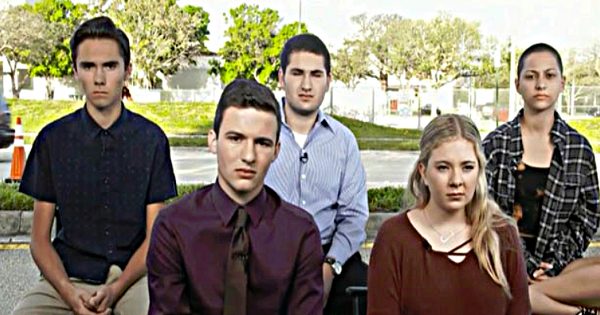 NPR – Despite Heightened Fear Of School Shootings, It’s Not A Growing Epidemic
NPR – Despite Heightened Fear Of School Shootings, It’s Not A Growing Epidemic
“The Parkland shooting last month has energized student activists, who are angry and frustrated over gun violence. But it’s also contributed to the impression that school shootings are a growing epidemic in America. In truth, they’re not.”
“Schools are safer today than they had been in previous decades,” says James Alan Fox, a professor of criminology at Northeastern University who has studied the phenomenon of mass murder since the 1980s.
Fox and doctoral student Emma Fridel crunched the numbers, and the results should come as a relief to parents.
First, while multiple-victim shootings in general are on the rise, that’s not the case in schools. There’s an average of about one a year — in a country with more than 100,000 schools.
“There were more back in the ’90s than in recent years,” says Fox. “For example, in one school year — 1997-98 — there were four multiple-victim shootings in schools.”
Second, the overall number of gunshot victims at schools is also down. According to Fox’s numbers, back in the 1992-93 school year, about 0.55 students per million were shot and killed; in 2014-15, that rate was closer to 0.15 per million.
“The difference is the impression, the perception that people have,” Fox says — and he traces that to cable news and social media. “Today we have cell phone recordings of gunfire that play over and over and over again. So it’s that the impression is very different. That’s why people think things are a lot worse now, but the statistics say otherwise.”
Other experts agree. Garen Wintemute is an emergency room physician who leads a prominent gun violence research program at the University of California, Davis. He says school shootings, specifically, are not epidemic.
“Schools are just about the safest place in the world for kids to be,” Wintemute says. “Although each one of them is horrific and rivets the entire nation for a period of time, mass shootings at schools are really very uncommon, and they are not increasing in frequency. What’s changed is how aware we are of them.”
But Wintemute believes mass shootings — whether in schools or elsewhere — are increasing social pressure to address the far more common threat of small-scale shootings, which mostly happen in private.
“For school-age kids, the kind of shooting we most need to worry about is the kind of shooting that occurs off the school grounds,” Wintemute says. “The best way to prevent school shootings is to prevent shootings in general.”
He endorses broader gun safety measures, such as “red flag” laws, which give authorities the ability to remove firearms temporarily from people deemed to be threatening violence to themselves or others.
Wintemute and Fox say that by focusing so narrowly on school shootings, we run the risk of turning schools into fortresses. Fox says, given the statistics, it’s misguided to put kids through metal detectors and active shooter drills, and he doesn’t like the new calls for armed teachers.
“Most adults wouldn’t want their workplaces to look like what some of the schools are looking like, now,” Fox says.
But the perception of danger puts school administrators in a difficult position.
Marysville Pilchuck High School, about an hour north of Seattle, has experienced the tragedy of a shooting, and the statistical rarity is no comfort.
On Oct. 24, 2014, a freshman shot five other students in the cafeteria, killing four, before killing himself. Ever since, administrators have struggled to restore the students’ sense of safety.
“Probably, every day it pops into your head at one time or another,” says acting district superintendent Jason Thompson. “You think, ‘Okay, we’ve had our shooting,’ right? It’s human to think that way. But I think a lot of times for me, it’s like, ‘This could happen again.'”
For the last three years, the district has wrestled with how to make schools safer, without going overboard. Local voters defeated a bond levy which would have remodeled the open-style campus into a more secure, single-entrance configuration. So the school remains very open. There’s a new security camera, a security guard near the entrance, and visitors are told to wear a badge on campus, but there are no new fences or metal detectors.
Greg Dennis, who runs security for the district, says it’s hard to reach consensus on what precautions to take.
“From a parent’s perspective, they say, ‘Holy cow, why aren’t we doing this? Why aren’t we building prisons, why aren’t we building moats?'” Dennis says. “And the next person says, ‘We can’t do that! This is public property, you have to make it accessible, how do we use the playgrounds on the weekend?'”
Without the money to rebuild the school, administrators have opted to emphasize training and preparedness. They try to think tactically — for instance, since the shooting in Parkland, they’ve been reconsidering how to conduct fire drills, to make kids less of a target to potential attackers as they leave their classes.
But Marysville staffers also try to keep the risk in perspective. Dennis says he tries to learn security lessons from other shootings, but he doesn’t want to obsess about them.
Madysen Pruss, who’s part of a federally-funded counseling program at the school, says that’s also her message to students when another shooting is in the news.
“We talk about how it’s publicized through social media,” Pruss says. “So it makes the threat feel greater than it is.”
This year’s seniors were freshmen when the shooting happened, so this is the last class that still has memories of the incident. Senior Olivya Cerdinio is one of a group of students who organized the school’s observance of the 1-month milestone since the shooting in Parkland.
“I’m like kind of done being sad about it, and I’m just really mad about it, and I want to make a change,” she says.
But it’s shootings in general that she’s mad about — not school shootings in particular.
“It’s not dangerous because of how schools are,” Cerdinio says, “but because a shooting can happen anywhere. It’s more about gun availability.”

